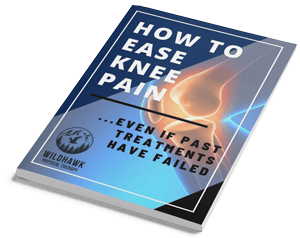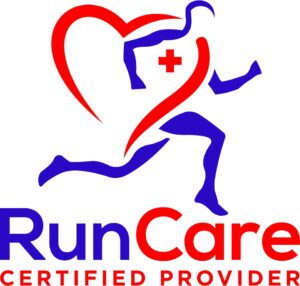
Pelvic pain with constipation is a concerning medical condition that affects many individuals. It can manifest as a discomfort in the lower abdomen, often linked to bowel movements. Understanding the underlying causes and seeking appropriate treatments is crucial for relieving the discomfort. This blog post will explore the causes, diagnostic evaluations, treatments, and prevention techniques for pelvic pain with constipation.
Causes of Pelvic Pain with Constipation
The causes of pelvic pain with constipation can be quite diverse, often involving various physiological factors. Among them, the role of abdominal muscles, urinary incontinence, and bowel movement patterns are significant. Understanding these underlying causes is vital to effectively diagnosing and treating this condition. Additionally, questions such as “can exercise cause pelvic pain?” must be explored, as improper or excessive exercise can sometimes exacerbate pelvic discomfort, especially when underlying conditions are present. Consulting with healthcare professionals about appropriate exercise routines and their potential impact is an essential part of the overall assessment and management process.
Gastrointestinal disorders
One common cause of pelvic pain with constipation is gastrointestinal disorders such as Irritable Bowel Syndrome (IBS). Affecting the large intestine, IBS can lead to symptoms like cramping, bloating, and a change in bowel habits. Learn more about IBS on the NIDDK website.
Pelvic floor dysfunction

Pelvic floor dysfunction refers to the inability to control muscles in the pelvic floor properly. This can cause difficulty in bowel movements, leading to pelvic pain with constipation. Exercise for pelvic pain is often recommended, but care should be taken as improper techniques can exacerbate the condition.
Particularly, therapies such as pelvic floor physical therapy and specific pelvic floor exercises are vital in treating pelvic floor dysfunction. These targeted approaches can alleviate pelvic floor pain and restore normal function. Qualified healthcare providers should always supervise pelvic floor therapy to ensure effectiveness and prevent further complications. The collaborative work between patient and therapist can improve the quality of life and reduce symptoms associated with pelvic floor dysfunction. It’s essential to consult with a professional like a pelvic physical therapy expert for guidance.
Hormonal factors
Hormonal changes, particularly in women, can lead to pelvic pain with constipation. Fluctuations in hormones may cause muscles in the pelvic region to function abnormally, leading to discomfort. A lack of coordination between pelvic floor muscles may further exacerbate this. Awareness and understanding of these hormonal influences can aid in the targeted treatment and management of symptoms. Research on hormonal effects on pelvic pain can be found on Northwell Health.
Psychological factors
Stress and anxiety may also contribute to pelvic pain with constipation. Psychological stress can manifest in physical symptoms, impacting the gastrointestinal system and the function of the pelvic floor muscles. The mind-gut connection is powerful, and mental stress can lead to digestive problems, including constipation. Behavioral therapies, relaxation techniques, and counseling can be beneficial in such cases, offering coping strategies and relaxation methods to alleviate these physical symptoms.
Chronic stress or unresolved psychological issues might even lead to chronic conditions, requiring more in-depth treatment. Healthcare professionals may prescribe cognitive-behavioral therapy (CBT), mindfulness practices, or medications to address the underlying psychological factors. Understanding and acknowledging the role of mental health in pelvic pain with constipation can lead to more effective and holistic treatment, promoting mental and physical well-being.
Diagnostic Evaluation

Diagnosing pelvic pain with constipation involves a comprehensive evaluation, including medical history, physical examination, and specialized tests. Tools like colonoscopy or blood tests may be used to identify the underlying condition. More details can be found on the Mayo Clinic website.
Treatment and Management
Treatment for pelvic pain with constipation may include dietary changes, medication, or therapies like massage for pelvic pain. Personalized approaches may also involve pelvic floor exercises under the guidance of professionals. It’s essential to consult with healthcare providers and registered physical therapists such as WildHawk Physical Therapy to tailor a treatment plan to your needs. Combining various treatment methods and closely monitoring progress ensures the best chance for a full recovery.
Prevention and Lifestyle Modifications

Preventing pelvic pain with constipation might involve dietary adjustments, regular exercise under guidance, stress management, and other lifestyle modifications. Adhering to a fiber-rich diet and engaging in physical activities is essential but must be done under professional supervision to ensure that exercise does not cause or contribute to pelvic pain.
Maintaining pelvic health is integral to prevention. Regular consultations with healthcare professionals, following a balanced diet, participating in physical exercises designed for pelvic health, and managing stress through mindfulness or relaxation techniques can contribute positively to overall well-being. Emphasizing pelvic health in daily routines can make a significant difference in preventing and managing pelvic pain associated with constipation.
Conclusion and Final Thoughts
Pelvic pain with constipation is a complex condition with various causes ranging from gastrointestinal disorders to psychological factors. Understanding these underlying causes, seeking professional diagnostic evaluations, and adopting appropriate treatments and preventive measures can significantly alleviate the condition. Ensuring a healthy lifestyle and engaging with professionals like pelvic physical therapists will go a long way in managing and overcoming pelvic pain with constipation.
The role of the pelvic floor muscles and pelvic muscles in maintaining pelvic health cannot be overstated. Proper care and strengthening of these muscles through exercises, therapies, and lifestyle changes can mitigate and often prevent pelvic pain with constipation. Collaboration with healthcare providers specializing in these areas can lead to a personalized approach to managing and alleviating this condition.
If you or someone you know struggles with pelvic pain and constipation, don’t hesitate to seek professional guidance. A specialized approach focusing on the pelvic floor muscles and pelvic muscles can make a meaningful difference. Wildhawk Physical Therapy offers personalized care and treatment plans tailored to your needs. Reach out today and take the first step towards a healthier, pain-free life.









